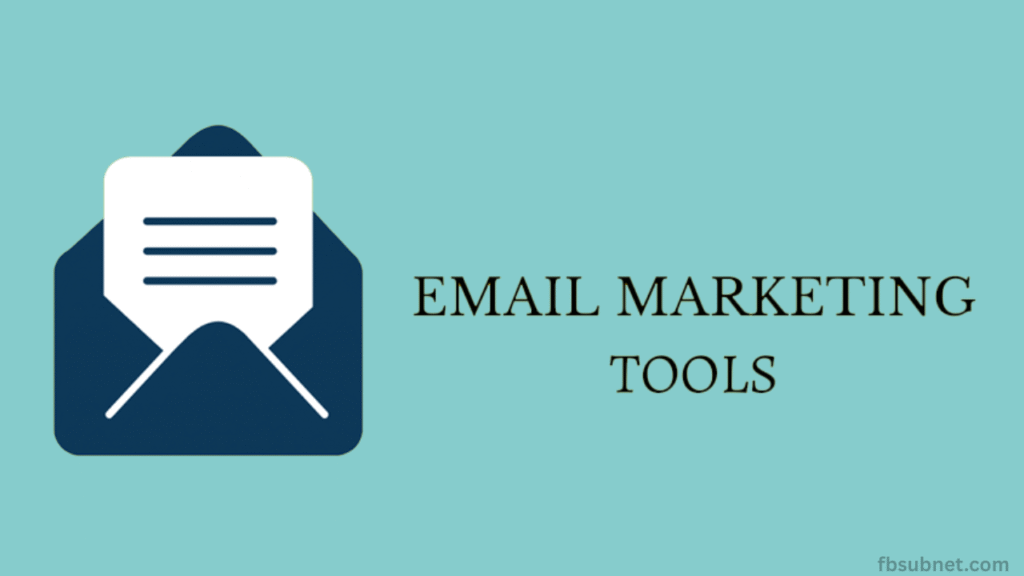Email marketing remains one of the most effective ways to connect with your audience, build trust, and drive sales. Unlike social media platforms that change their algorithms overnight, your email list is a digital asset you control. But here’s the catch—managing and scaling email campaigns can be time-consuming and expensive if you don’t have the right tools.
The good news? You don’t need to break the bank to get started. Today, several free email marketing tools give you access to features like automation, segmentation, analytics, and even landing pages. These platforms allow businesses of all sizes—especially startups, bloggers, and small businesses—to run professional campaigns without a hefty budget.
Why Free Email Marketing Tools Matter
Email is a low-cost channel with a high return on investment. According to recent studies, businesses can earn an average of $36 for every $1 spent on email marketing. That’s a return difficult to ignore.
Free tools make it possible for beginners to test strategies without financial risk. For small businesses with limited budgets, they provide a gateway to professional-grade campaigns. And for marketers who already use paid platforms, free tools can serve as backups or for specific niche projects.
Beyond cost, many free platforms offer surprisingly robust features—ranging from customizable templates to advanced automation workflows. The key is knowing which ones provide the most value for your specific needs.
1. Mailchimp – Best All-in-One Starter Tool
If you’ve ever searched for email marketing platforms, chances are Mailchimp popped up first. Known as the industry leader, Mailchimp is beginner-friendly while offering advanced options as you scale.
Key Features
- Generous Free Plan: Up to 500 subscribers and 1,000 emails per month.
- Drag-and-Drop Builder: Design beautiful newsletters without coding.
- Automation Workflows: Send welcome emails, abandoned cart reminders, or follow-ups.
- Analytics Dashboard: Get insights into open rates, clicks, and subscriber growth.
Why Choose Mailchimp?
It’s the perfect entry point for beginners. You can start simple with newsletters and gradually adopt automation as your list grows. Plus, Mailchimp integrates seamlessly with platforms like Shopify, WordPress, and social media ads.
2. Brevo (Formerly Sendinblue) – Best for SMS + Email Combo
Brevo sets itself apart by combining email and SMS marketing under one roof. This makes it a strong choice for businesses that want multi-channel communication.
Key Features
- Free Plan: Unlimited contacts, with 300 emails per day.
- SMS Campaigns: Reach audiences directly on their phones.
- Advanced Automation: Create personalized customer journeys.
- Transactional Emails: Perfect for order confirmations and shipping updates.
Why Choose Brevo?
Its free plan is ideal for small businesses that need daily outreach. The ability to combine SMS with email adds an edge for eCommerce stores and service providers looking to stay top-of-mind.
3. MailerLite – Best for Clean Design and Ease of Use
MailerLite shines with its minimalist interface and focus on simplicity. If you dislike clutter and want straightforward tools, this platform might be your match.
Key Features
- Free Plan: Up to 1,000 subscribers and 12,000 monthly emails.
- Landing Page Builder: Create high-converting pages without external tools.
- Automation and Segmentation: Deliver targeted messages at the right time.
- Surveys and Forms: Collect valuable customer feedback directly from your emails.
Why Choose MailerLite?
It’s excellent for bloggers, creators, and educators who want clean, professional-looking campaigns. The drag-and-drop landing page builder adds huge value for lead generation.
4. Benchmark Email – Best for Easy Automation
Benchmark Email combines modern templates with user-friendly automation. It’s designed for small businesses that want to deliver consistent, engaging campaigns.
Key Features
- Free Plan: Up to 500 subscribers and 3,500 emails per month.
- Responsive Templates: Look great on both desktop and mobile.
- Automation Lite: Send welcome emails and timed sequences.
- A/B Testing: Optimize subject lines and email designs.
Why Choose Benchmark?
Its standout feature is ease of automation. If you’re dipping your toes into marketing automation but don’t want complexity, Benchmark strikes the right balance.
5. Moosend – Best for Affordable Upgrades
Moosend is gaining traction for offering advanced features at beginner-friendly prices. Its free plan is generous enough to test premium-grade tools.
Key Features
- Free Trial Plan: Unlimited emails for up to 30 days.
- Drag-and-Drop Automation Builder: Build workflows visually.
- AI-Powered Product Recommendations: Great for eCommerce.
- Analytics and Reporting: Track performance with precision.
Why Choose Moosend?
It’s perfect for businesses considering future upgrades. The platform gives you a taste of advanced features like AI-driven recommendations without immediate financial commitment.
6. HubSpot Email Marketing – Best for CRM Integration
HubSpot is widely known for its powerful CRM, but its email marketing tool deserves equal attention. The free plan is incredibly useful for small businesses already exploring CRM strategies.
Key Features
- Free Plan: 2,000 emails per month and up to 1 million contacts.
- CRM Integration: Sync emails with customer relationship data.
- Personalization Tokens: Create hyper-targeted campaigns.
- Drag-and-Drop Builder: Professional templates included.
Why Choose HubSpot?
If you’re serious about long-term growth, HubSpot’s ecosystem allows seamless scaling. The free plan alone is robust, especially for businesses that need CRM and email in one place.
7. ConvertKit – Best for Creators and Bloggers
ConvertKit is designed with creators in mind—whether you’re a blogger, YouTuber, or podcaster. Its focus is on helping you build and nurture your audience.
Key Features
- Free Plan: Up to 1,000 subscribers.
- Customizable Sign-Up Forms: Grow your list faster.
- Automation Rules: Send emails triggered by specific actions.
- Tag-Based Organization: Organize subscribers by behavior and interests.
Why Choose ConvertKit?
It’s ideal for content creators who need to engage their fans consistently. ConvertKit’s clean workflows and creator-friendly features make it easy to turn casual readers into loyal subscribers.
Read More: 10 Powerful SEO Tips Beginners 2025 Must Know
Key Trends in Free Email Marketing Tools
The email marketing space is evolving rapidly. Here are some trends shaping free platforms today:
AI-Powered Personalization
Many platforms now integrate AI to suggest subject lines, send times, or even content tailored to each user.
Multi-Channel Communication
Tools like Brevo and HubSpot are merging email with SMS, social, and CRM for holistic engagement.
Data Privacy Compliance
GDPR and CCPA regulations have forced platforms to prioritize privacy. Free tools now include compliance features by default.
Creator Economy Support
Platforms like ConvertKit are tailoring features specifically for creators, offering monetization and audience growth tools.
How to Choose the Right Free Tool
Not every tool suits every business. Here’s how to decide:
- For eCommerce Stores: Brevo or Moosend (SMS and AI recommendations).
- For Bloggers and Creators: ConvertKit or MailerLite (content-focused).
- For Small Businesses: Mailchimp or Benchmark Email (easy setup).
- For Growth with CRM: HubSpot (scales seamlessly).
- Ask yourself: What’s my primary goal—building a list, nurturing customers, or driving sales? Once you know, the right tool becomes clear.
Frequently Asked Questions
What are free email marketing tools?
Free email marketing tools are platforms that let you design, send, and track emails without cost. They often include features like templates, automation, and analytics with limits on subscribers or emails per month.
Which free email marketing tool is best for beginners?
Mailchimp and MailerLite are great starting points. Both offer intuitive drag-and-drop editors, beginner-friendly automation, and generous free plans.
Can I run automation with free email marketing tools?
Yes. Many free tools like Brevo, ConvertKit, and MailerLite allow basic automation such as welcome sequences, abandoned cart reminders, and timed campaigns.
How many emails can I send with a free plan?
It varies by platform. Mailchimp allows 1,000 emails per month, while Brevo lets you send 300 emails daily. Always check each provider’s plan limits.
Are free email marketing tools good for eCommerce?
Absolutely. Platforms like Brevo and Moosend provide eCommerce-friendly features such as SMS integration, product recommendations, and transactional emails.
Do free email marketing tools include analytics?
Yes, most free plans include analytics dashboards. You can track open rates, click-through rates, and subscriber growth to improve your campaigns.
Can I upgrade later if my list grows?
Definitely. All free tools offer paid upgrades with higher limits and advanced features. This makes scaling easy as your business and subscriber base expand.
Conclusion
Email marketing remains the backbone of digital growth. With the rise of free email marketing tools, anyone—from solopreneurs to growing startups—can launch campaigns that rival big brands. The seven platforms we explored—Mailchimp, Brevo, MailerLite, Benchmark, Moosend, HubSpot, and ConvertKit—each offer unique strengths. Whether you prioritize design, automation, CRM integration, or creator-focused features, there’s a solution waiting for you. The best part? You can test them all without spending a dime. Start with one, experiment with strategies, and scale as your audience grows. Your future customers are just one click away from your inbox.


